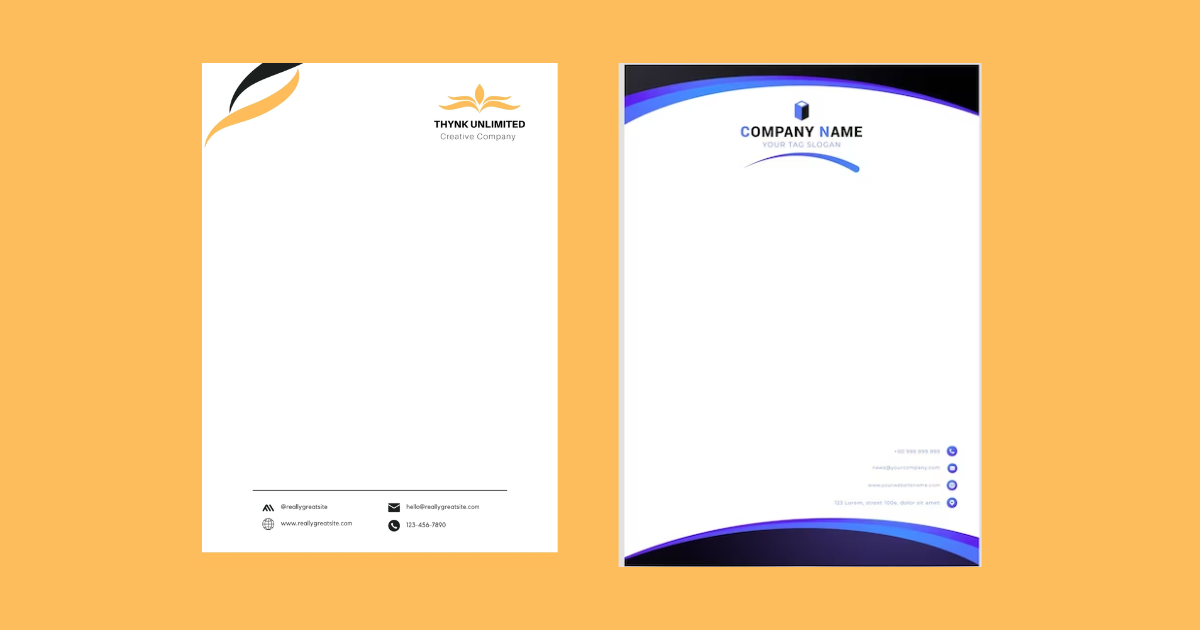In the world of business, first impressions matter, and your letterhead is often the first thing a prospective client or employee sees. A well-designed letterhead not only conveys professionalism but also serves as a powerful branding tool. Let’s explore the key elements and steps to create a captivating business letterhead.
Choosing the Right Color Palette
The color scheme of your letterhead is crucial. Consider using complementary colors—those opposite each other on the color wheel—to create a visually appealing contrast. This not only adds vibrancy but also ensures readability. Your company’s logo, positioned at the top, should set the tone for the color palette across all communications.

Incorporating Brand Elements
Make your letterhead instantly recognizable by incorporating key brand elements. The company logo, strategically placed at the top, reinforces your brand identity. Ensure consistency by repeating the logo, albeit in a smaller size, at the bottom of subsequent pages.
Typography: Less is More
When it comes to fonts, simplicity is key. Opt for clean, geometric designs that are easy to read. Creative use of fonts can add flair, but remember, clarity should never be compromised. Consistency in font usage across all communications maintains a professional and cohesive look.
Designing Patterns for Impact
Consider incorporating patterns to make your letterhead stand out. Geometric shapes, when arranged creatively, can create a striking visual impact. Think about the geometric shapes activity you may have done in the past—translate that creativity into your design. Experiment with bold patterns but maintain a balance to avoid overwhelming the reader.
Playing with Backgrounds
Don’t underestimate the power of a well-designed background. A subtle pattern or color gradient can add depth without distracting from the content. Ensure that the background complements the overall design and doesn’t overshadow the text.
Striking Arrangement of Elements
The arrangement of elements on your letterhead should guide the reader’s eye. The header, contact information, and any additional design elements should be strategically placed for a clear and organized look. Consider mirroring design elements to create symmetry without overshadowing the main header.
Keeping it Simple and Elegant
If flashy designs aren’t your style, simplicity can be equally powerful. Focus on your logo and contact information, using a clean layout. A solid line or subtle framing image can add a touch of elegance without being overwhelming.
Adhering to Brand Guidelines
Always refer to your brand guidelines when designing your letterhead. Consistency in colors, fonts, and overall style reinforces brand identity. Your letterhead should seamlessly integrate with your existing marketing materials.
Finalizing the Letterhead Template
Once you’ve considered these design elements, it’s time to finalize your letterhead template. Start with a simple template, ensuring it aligns with your brand goals. Feel free to experiment, but remember that clarity and professionalism should always take precedence.

Crafting an impactful business letterhead is an art that combines creativity with strategic design. Whether you choose a bold and vibrant approach or a more minimalist style, let your letterhead speak volumes about your brand from the very first glance.
Frequently Asked Questions (FAQs)
What elements should be included in a business letterhead?
A business letterhead typically includes the company’s logo, name, address, phone number, email, and website for a professional look.
What software can I use to create a business letterhead?
Design software like Adobe InDesign or word processors like Microsoft Word are popular choices. Choose based on your design preferences and skill level.
How can I ensure the design is professional and reflects my brand?
Maintain a clean and cohesive design. Use the company’s color scheme, fonts, and logo consistently to reinforce brand identity.
Are there standard dimensions for a business letterhead?
The standard size is 8.5 x 11 inches. However, adapt the dimensions to fit your needs, ensuring it align well with the layout of your documents.
Related Articles:
Letterhead Design: Tips for Crafting an Impressive Letterhead.









